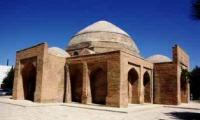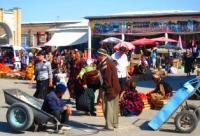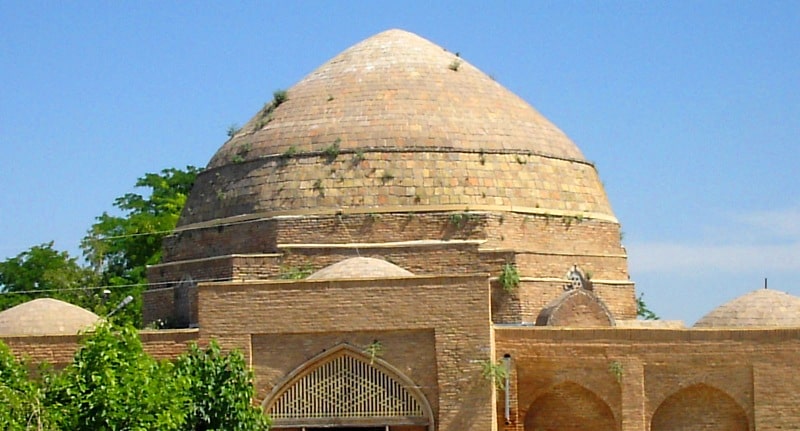You are here
Chorsu bazaar in Shakrisabz.



Tours on architectural monuments Shakhrisabz.
“Such a case is known. The Persian king Darius, the conqueror of the largest empire of Babylon, was once addressed by his subjects: "Our country is rocky, steppe, it is difficult to extract water. We conquered many beautiful countries with surprisingly mild climate, why don't we move to where the climate is good?" The answer was: "The land, nature, climate harden and shape the character of the people. If we had not lived here, we would not have won half the world. Therefore, we should not allow relocation"
Excursion in Shakhrisabz.
Chorsu bazaar and baths in the town centre, the covered Chor-su bazaar was built at the crossroads of two main streets, in the form of an octagon with a central cupola, with no particular decoration but with an eye to the exterior effect of bold architecture.
This construction dates from the XVIII-th century, as do the baths, rebuilt on the site of the XV-th-century baths and still in use today. The baths are heated by an elaborate network of underground conduits.
Being a trade and handicrafts centre, Shakhrisabz posessed many commercial buildings. Unfortunately, only one of them has survived – Chorsu covered market, which was built in 1602.
It is located in the very centre of the city on the intersection of ancient street which ran from the city southern gate Charymgar, in Timur’s time called Termez Gate, and the arterial road traversing Shakhrisabz from east to west.
There was a bazaar and public baths here, still functioning nowadays. No other place in the city would be more convenient to accommodate the covered market. Despite the formal resemblance of Shakhrisabz covered market with the medieval trade domes of Bukhara and Samarkand, Chorsu bazaar has a remarkable layout.
This is a round building 21 metres in diameter. Four portals with arched doorways, oriented towards the cardinal points, lead inside, to the central hall of the building – a spacious square area with chamfered corners.
From the central hall passages lead to eight corner rooms. The central hall is covered by spherical dome based on arched pendentives, whereas corner premises are topped by smaller domes.
The covered market was not decorated with mosaics or majolica. owever, the ‘herring-bone’ pattern of fine brickwork of the pendentives serves functionality as well as aesthetic purpose.
Each section of Chorsu bazaar traded in goods of certain type – ceramics, handmade embroidery which local Kashkadarya embroideresses are famous for until present day, imported and local fabrics, carpets and other goods.

Authority:
« Religious and spiritual monuments of the Central Asia ». The author of M. Khashimov. Publishing house " Saga ", 2001. Belenitski A.M., Bentovitch I.B., Bolshakov O.G. « Medieval city of Central Asia»., 1973, Leningrad: Klyashtornyi S.G. “History of the Central Asia and monuments runic letters”: Bernshtam A.N. «History-archeologic sketches Central Tien-Shan and Pamir-Alay». Masson V.M.”Midle Central Asia and Middle East”.
Photos
Alexander Petrov.







